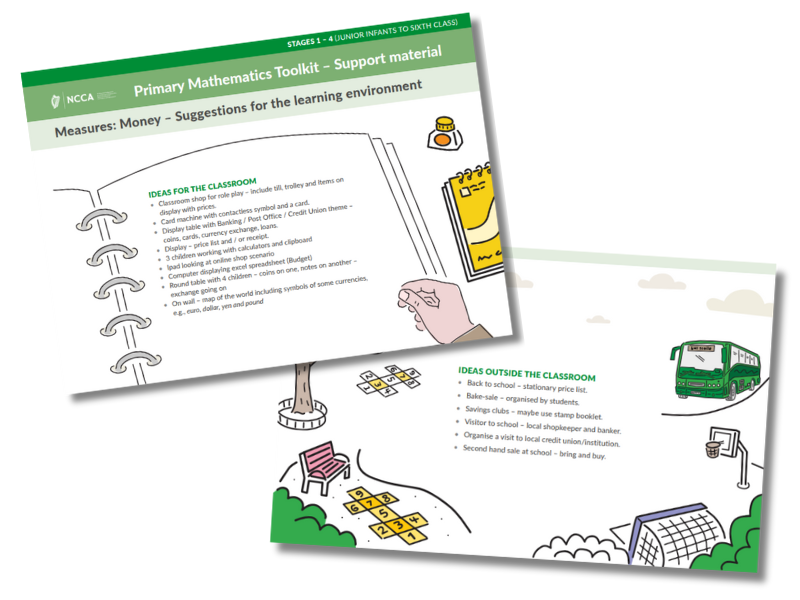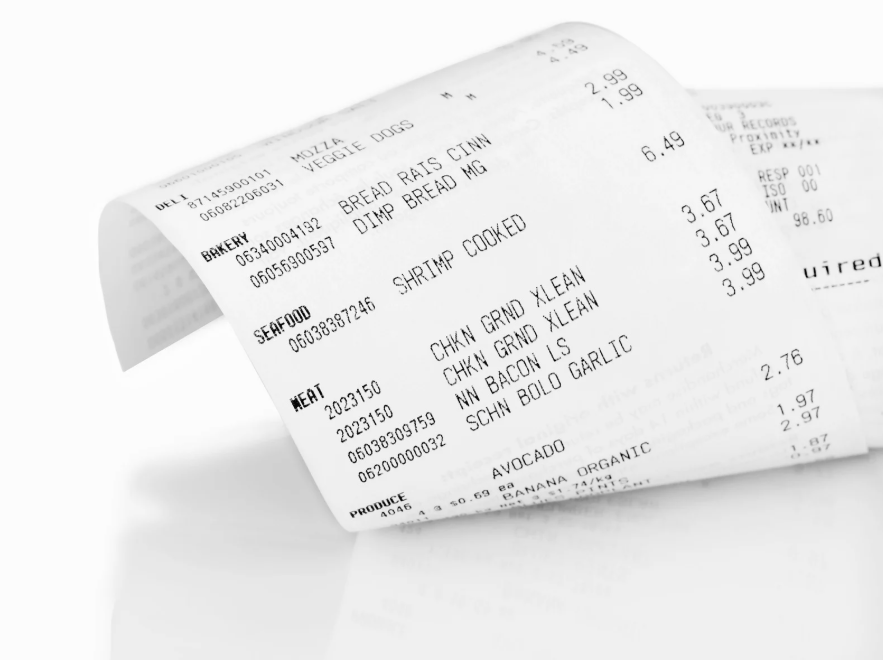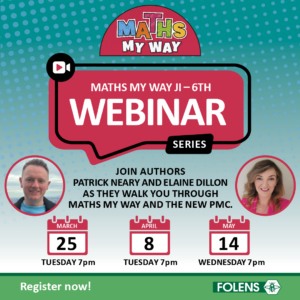Guest author, Roisin, shares how she has introduced Money as a topic to her multigrade class and her ideas and recommendations for a classroom environment to support learning, play and real life applications for this wide ranging topic.
Let’s give a little context first of all. Let’s say I have a 2nd, 3rd & 4th class split. We’re about to explore money as a topic during numeracy and we want to incorporate as much time for play based learning as possible.
Make time for ‘Maths Talk’
Every child, every classroom, every day!
I begin by scaffolding what the kids already know through group work within each class level. This will allow for assessment for learning from the offset.
In groups of twos or three, the kids sit knee to knee and eye to eye to support social interaction and engagement, i.e. they sit facing their partner/in a position that allows for switched interaction between two partners.
I will usually set a 60-90 second timer. I like to call this a ‘yap clock’ – they get to yap (chat) for this amount of time!
They tell their partners everything they know about money and bring it all back to our whole class discussion.
The emphasis here is on vocabulary and Maths Talk. Bringing this all back to a whole class discussion will allow for peer learning and for you, allows scope into where best to target initial topic focus.
We finally make a class anchor chart on ‘Money’ together for reference throughout the topic.
Make personal ‘Money Maps’
Draw direction from what the kids know and allow them to create their own doodle focused ‘Money Map’ to illustrate their own unique understanding of money.’
Prompt them with Maths Talk vocabulary from the anchor chart. This will show the levelling degrees of knowledge on the topic and will allow for you to direct your attention at one class level whilst the others work on their maps.
Creating the right classroom environment
I always try to introduce purposeful areas for learning for new topics into the classroom environment. There are lots of easily implementable and useful suggestions on the curriculum.ie website for Money.

These include your usual ideas of a shop set up but also gave me ideas on making the environment rich with contactless signs, currency exchange posters, an iPad area, an exchange table, Class Bank, etc.
I find that these kinds of ideas are often best incorporated as a child led play element to conclude lessons and allow for the application of learning after each teacher led play lesson. The mix of class levels during this time allows for peer learning and is a catalyst for learning for most children.
I can also use this time each day to take a focus group or class level (depending on numbers) to more standard focused learning objectives or take time for a support group in weaker/stronger learners. For example, in using this time to target 4th class objectives, I can introduce operations with money, and with 2nd class, deepen understanding and automaticity with calculating change, etc.
Suggestion: Use real life receipts
In the weeks leading up to the topic, I keep receipts from trips to various shops like a food shop, a stationery shop, a butcher, a coffee shop, etc. I can link these with places the kids in your class would know from the area, for example if there is an Aldi or SuperValu in your area use receipts from here.

Longer shops could be kept and allocated to older classes whilst shorter receipts could be used with the younger classes in your room.
Receipts in older classes can be altered to create a mistake which they have to figure out, aiming to support problem solving and real life application during this exercise.
Receipts can also be used as a ‘Shopping Dash’ game for shop area in the classroom. Kids are paired up to have to complete the receipt list in the quickest time.
Whilst directive teaching is taking place for older classes, 2nd class could use receipts as calculating change in groups or creating alternative lists for similar amounts.
Final thoughts
Hopefully you have found something useful that might work in your multigrade classroom. Check back for more ideas in the future as I share how we tackle more topics.


Leave a Comment